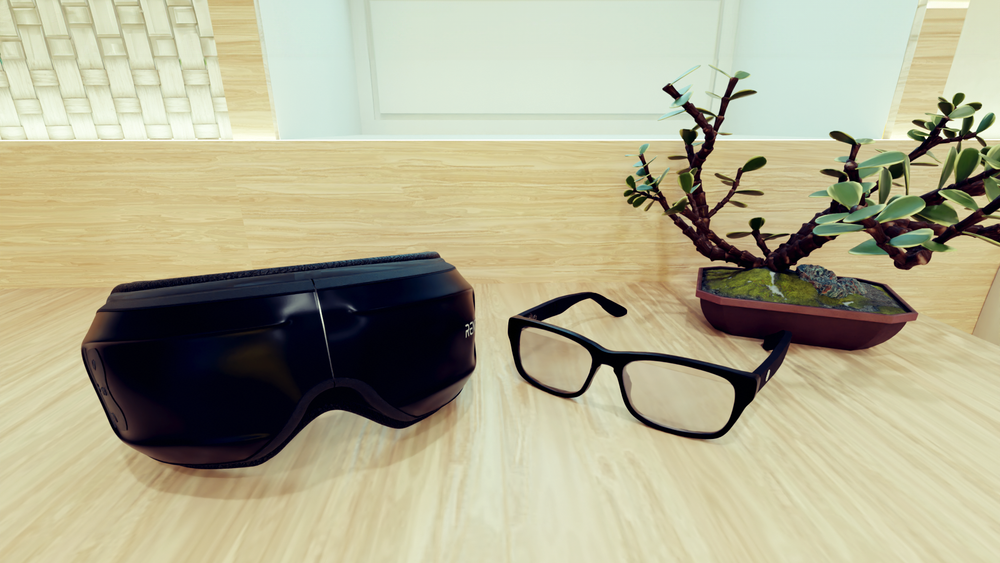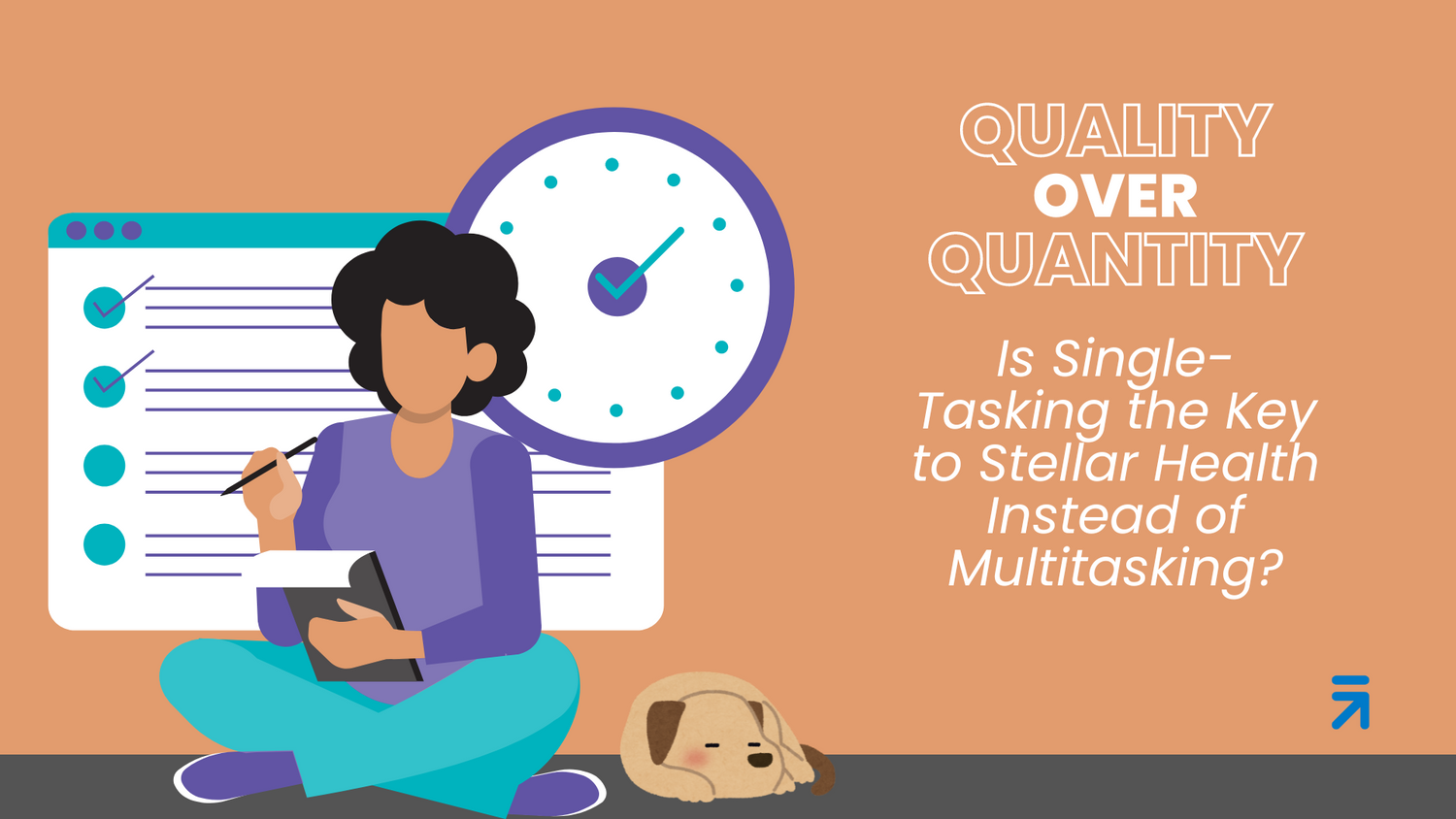Goodbye, Blurry Vision: How Regular Eye Massage Can Help Manage Astigmatism

Stay tuned to our latest news
If you live with astigmatism, you're all too familiar with the frustration of blurry, distorted vision. Squinting, eye strain, and headaches are just a few of the annoying side effects that can accompany this common refractive error. While corrective lenses and surgeries are often the go-to solutions, there's another natural remedy that you need to see: eye massage.
Regular eye massage may seem like a simple self-care practice, but it can have a profound impact on managing astigmatism and improving your overall visual comfort. By incorporating gentle, soothing eye massage techniques into your daily routine, you can potentially experience clearer, more focused vision and say goodbye to the blurriness that's been holding you back.
So, get ready to ditch the eyeglasses, reduce eyestrain, and embrace a future with sharper, more comfortable eyesight. Let's dive in and see the power of eye massage for astigmatism management!
What Is Astigmatism?

As mentioned briefly, astigmatism is a common vision condition that causes blurred or distorted vision. It occurs when the cornea, the clear front surface of the eye, or the lens inside the eye is irregularly shaped. Unlike other vision problems like nearsightedness or farsightedness, astigmatism affects both near and far vision. When light enters the eye, it is not evenly distributed, resulting in a refractive error. This causes incoming light to focus on multiple points rather than a single point on the retina, leading to a distorted image.
What Causes Astigmatism?
Irregular corneal shape is one of the main causes of astigmatism. The cornea, which is the clear front surface of the eye, should ideally have a spherical shape. However, in astigmatism, the cornea is shaped more like a football, with two different curvatures. This irregularity causes light to be focused at multiple points on the retina, resulting in blurred and distorted vision.
Abnormalities in lens curvature can also contribute to astigmatism. The lens, located behind the iris, helps to focus light onto the retina. If the lens is not evenly curved, it can cause light to be unevenly refracted, leading to astigmatism.
Genetics plays a significant role in the development of astigmatism. It is believed that individuals with a family history of astigmatism are more likely to develop the condition themselves. This suggests a genetic predisposition for the irregular corneal and lens shape associated with astigmatism.
Eye surgery or injury can also cause astigmatism. Surgeries like cataract removal or corneal transplant, as well as injuries that impact the cornea, can alter its shape and curvature, leading to astigmatism.
Keratoconus, a condition characterized by thinning and bulging of the cornea, can result in astigmatism. The irregular corneal shape associated with keratoconus causes light to be refracted unevenly, contributing to astigmatism.
What Are the Signs of Astigmatism?
One of the main signs of astigmatism is blurred vision. Individuals with this condition often experience a blurriness in their vision, both up close and far away. This blurriness can make it difficult to see fine details or to focus on objects.
Another sign of astigmatism is distorted or stretched vision. This means that images may appear warped or stretched out, making it challenging to perceive objects accurately. This distortion can make shapes and lines appear irregular or distorted.
Eye strain or discomfort is another common symptom of astigmatism. Individuals may experience eye fatigue or discomfort after reading or working on a computer for an extended period. Additionally, astigmatism can cause headaches, especially after prolonged visual tasks.
Difficulty seeing clearly at night is another potential sign of astigmatism. Many people with astigmatism report that their vision worsens in low light conditions, making it harder to drive or perform other nighttime activities.
Lastly, squinting to improve focus is also a sign of astigmatism. Squinting can momentarily improve clarity for individuals with astigmatism by reducing the amount of light that enters the eye and minimizing the visual distortions.
Why Are Healthy Eye Muscles Essential in Having Good Vision?

Having good vision is crucial for our daily lives and overall well-being. While most people tend to focus on the clarity of their eye lenses or the health of their retinas, it is often overlooked that healthy eye muscles play a significant role in maintaining good vision. These muscles control the movement and coordination of our eyes, allowing them to focus on objects near and far, track moving targets, and maintain visual stability.
How Does Weak Eye Muscles Affect Vision?
One of the most common vision issues caused by weak eye muscles is strabismus, also known as crossed or misaligned eyes. In this condition, the weak muscles are unable to work together, resulting in one eye turning inward or outward. This misalignment can cause double vision and significantly impair depth perception.
Additionally, weak eye muscles can lead to poor muscle control, making it difficult to maintain a steady gaze. This can result in symptoms like eye strain, blurred vision, and difficulty focusing on objects at different distances.
What Are Some Common Treatments for Astigmatism?

The most common treatment for astigmatism is the use of eyeglasses or contact lenses. Both options work by compensating for the irregular shape of the cornea, which is the main cause of astigmatism. Eyeglasses have lenses that are specifically designed to correct the refractive errors associated with astigmatism, while contact lenses sit directly on the cornea to provide clear vision.
Another popular treatment for astigmatism is LASIK surgery. During this procedure, a laser is used to reshape the cornea and correct its irregularities. LASIK surgery is a highly effective method for treating astigmatism, and many patients experience improved vision shortly after the procedure.
Eye exercises, such as focusing and relaxing techniques, may also be recommended as a treatment for astigmatism. While they are not as commonly used as eyeglasses, contact lenses, or LASIK surgery, some people find that eye exercises can help improve their astigmatism symptoms.
Can Eye Massage Help Manage Astigmatism?

Astigmatism is a common eye condition that causes blurred vision due to an imperfection in the curvature of the cornea or lens. It is often accompanied by other vision problems such as nearsightedness or farsightedness. While there are various treatment options available for astigmatism, such as corrective lenses or surgery, some individuals are curious about alternative approaches that may help manage their symptoms. One such method is eye massage, which is believed to potentially alleviate the effects of astigmatism by relaxing eye muscles, improving blood circulation, and reducing eye strain. Although there is limited scientific evidence to support the efficacy of eye massages specifically for astigmatism, many people claim it has provided them with some relief. However, any self-care practices for astigmatism should be discussed with an ophthalmologist to ensure they are safe and appropriate for individual needs.
What Are the Benefits of Regular Eye Massage for Astigmatism?
Regular eye massage can provide several benefits for individuals with astigmatism. Astigmatism is a common eye condition that causes blurred vision due to an irregularly shaped cornea or lens. One of the benefits of regular eye massage is that it can help to improve blood circulation in the eye area. This increased blood flow can nourish the eye muscles and promote overall eye health.
Eye massage can also help to reduce eye strain, which is a risk factor that can worsen astigmatism. Astigmatism is often associated with eye strain caused by prolonged periods of focusing on close-up objects, such as reading or using digital devices. By relieving eye strain through massage, individuals with astigmatism can experience improved visual comfort and reduced symptoms such as headaches or eye fatigue.
Furthermore, incorporating eye exercises into a regular eye massage routine can provide additional relief for astigmatism. Eye exercises involve moving the eyes in different directions and focusing on various objects to strengthen eye muscles and improve visual accuracy. These exercises can help to relax the eye muscles, reduce eye strain, and ultimately alleviate the risk factors that contribute to the progression of astigmatism.
Takeaway
While astigmatism is a common refractive error that can cause significant visual disturbances, there is promising evidence that regular eye massage may provide a natural, complementary approach to managing this condition. By relaxing the eye muscles, improving blood circulation, and reducing eye strain, eye massage can alleviate many frustrating symptoms associated with astigmatism, such as blurred vision, headaches, and discomfort.
Though corrective lenses and surgical procedures remain the primary treatment options for astigmatism, incorporating gentle eye massage techniques into one's daily routine could be a valuable addition. Not only can eye massage provide short-term relief, but regular practice may also contribute to long-term improvements in visual acuity and overall eye health.
As with any self-care regimen, it is important for individuals with astigmatism to consult with their eye care professionals to ensure the safety and appropriateness of an eye massage routine. With the guidance of medical experts and a commitment to consistent practice, eye massage may prove to be a powerful natural remedy for managing the challenges of living with astigmatism. By embracing this holistic approach, individuals can work towards a clearer, more comfortable vision and a future free from the frustrations of blurred and distorted sight.
Renpho Health Tips
-

Quality over Quantity: Is Single-Tasking the Key to Stellar Health Instead of Multitasking?
June 18, 2024
Read more >
-

Relief Hacks: The Importance of Keeping a Migraine Diary
June 17, 2024
Read more >
-

Migraine Management: A Journey Through Natural Migraine Remedies
June 12, 2024
Read more >
-

Little Minds, Big Pains: Understanding Migraines in Children
June 10, 2024
Read more >
-

5 Proven Preventative Medications for Chronic Migraines
June 10, 2024
Read more >






